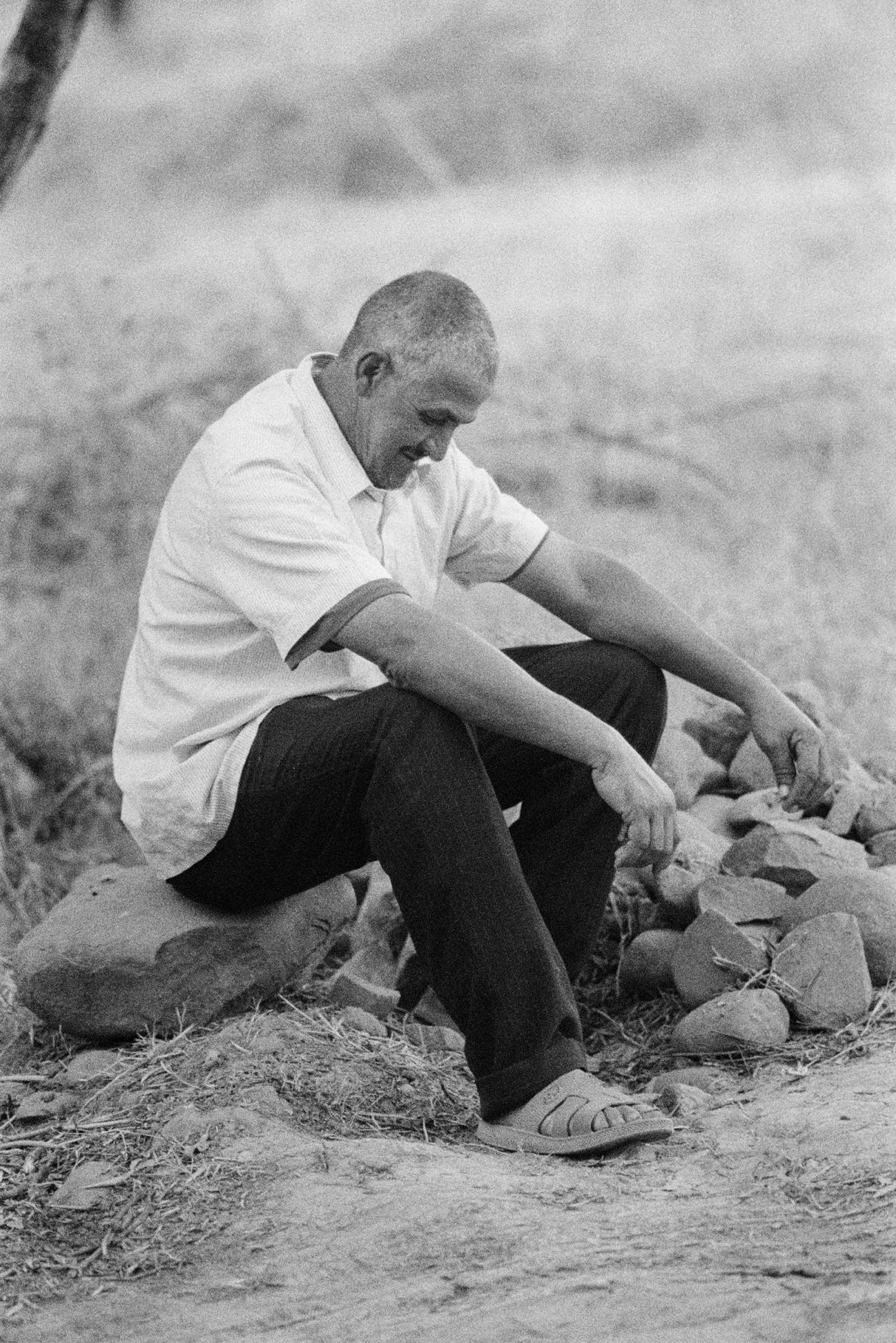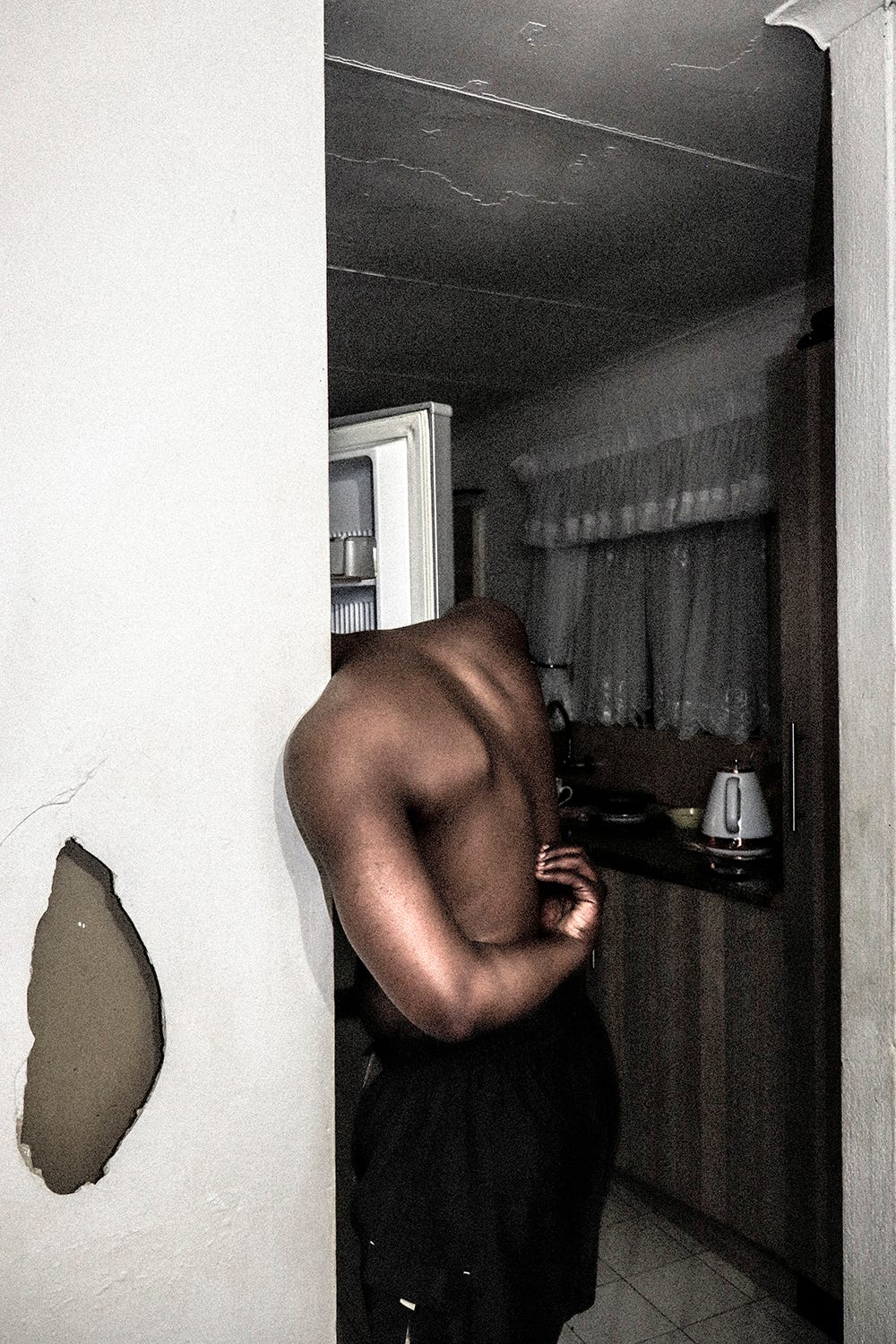The man’s patient poise is perhaps a trick of the camera. How long he’d sat in that manner is a knowledge lost in his careful perch on the rock, in the relaxed dangle of his hands. Beside him there is a cluster of stones, from which he might have pulled his makeshift seat. His full frame is shown, and little else, so that there is no other way to grasp in full the context of his mood, whether or not he has retreated from a large group, for instance, or in what way the landscape has shaped his manner of presenting himself. What little can be known of him is unlikely to change if he had arched his head towards you—but then, at the very least, you might have caught a glint of familiarity.
— Emmanuel Iduma
“I wish to convey a provocation and a dialogue where the viewer does not expect it to be.”
This analog photograph was taken in Marrakech. It is part of my latest project completed while I was in residency at Montresso Art Foundation
Through my practice, I wish to convey a provocation and a dialogue where the viewer does not expect it to be and to break invisible boundaries and preconceptions our societies often hold onto. I try to introduce nuances and complexities to each subject matter with an urge to bring to the fore each person’s individuality and singularity. My practice often depicts intimate and unspoken facets of contemporary Moroccan culture.
— Yasmine Hatimi
About Yasmine Hatimi
Yasmine Hatimi works as a photographer in Casablanca. Her latest work focuses on young Moroccan masculinity, which she approaches with a certain dreamlike romanticism. Her work has been shown at festivals and venues including Photo España, Festival Photo Saint Germain, Alliance Française de Safi, Festival d’Arles, Fondation des musées in Rabat, Middle East Institute in Washington, DC. See more of her work on her website.
RELATED — “Youssef” by Mohamed Hozyen
I was walking on the cornice of Alexandria with a friend, holding my point-and-shoot film camera in my hand. When I saw Youssef I thought he was an attractive person. I stopped and stepped back and started talking with him, listening to his story. Every Sunday he goes to the seaside of the cornice and has a very long walk enjoying this side of the city as he is an old man now and has nothing to do and he loves to walk so much.
LAST WEEK — “Imvelaphi (On Identity)” by Ngidi Thando Mfundo
This image was made at home during the COVID-19 lockdown, a time marked by both anticipation and anxiety as I awaited the birth of my first child. The home, once a space of comfort and security, had transformed overnight into a place of confinement and uncertainty. The lockdown imposed physical restrictions, but it also intensified the emotional landscape I was navigating. The walls that surrounded me not only enclosed my body but also echoed my thoughts and feelings about impending fatherhood and the fragility of the world outside.
This is the 138th edition of this publication. The newsletter also read on web (best for viewing images), and via the Substack iOS/Android apps.
TENDER PHOTO is a collaborative digital archive and publishing platform of contemporary African photography, edited by Emmanuel Iduma. Our aim is to use photography to engage with life on the African continent. We publish narratives about the people, places, and events pictured in photographs, contributing to nuanced and layered perceptions.
Every Wednesday we feature a photograph, a short caption about it, and a statement from the photographer. Last year, we published commentaries or photo-essays in response to photographs previously featured on the newsletter, including CORRESPONDENCES, CONCORDANCE, KINDRED, INDEX, and AFFINITIES.
Thank you for reading. If this newsletter was shared with you, consider subscribing, or forward to a friend. Please whitelist the newsletter to ensure you never miss it.





